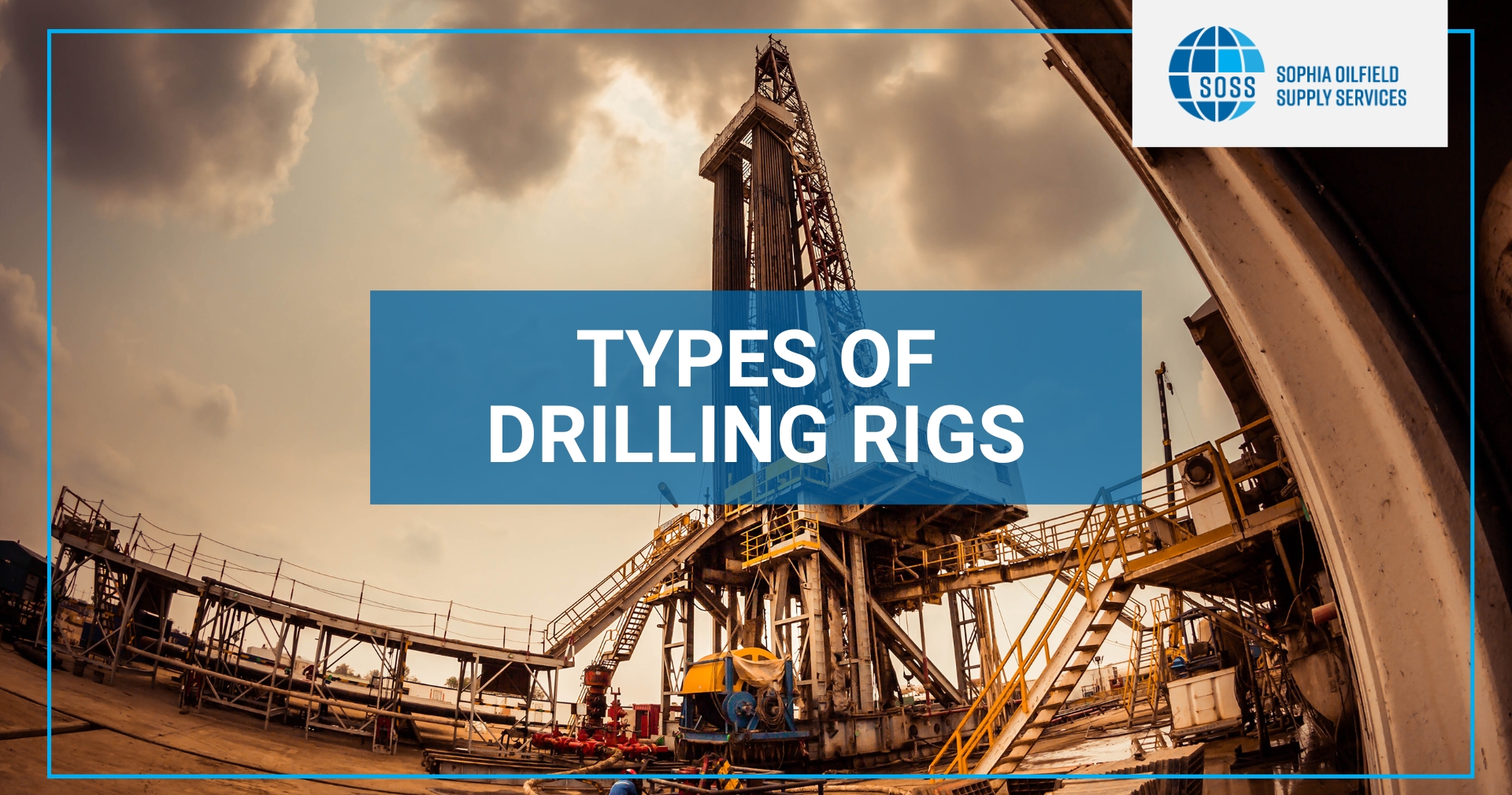Have you ever wondered what it takes to drill deep into the Earth?
How do different industries like oil, gas, and geothermal energy extract resources from beneath the surface?
The answer lies in drilling rigs—massive machines designed for precision, power, and endurance.
But what makes one rig better for an offshore project and another ideal for land drilling? What factors should you consider when choosing the right rig for your job? It’s not just about drilling deep. What’s even more important is doing it efficiently and safely.
Drilling rigs come in all shapes and sizes. Some are built for extreme depths, while others are specialized for tough terrains. Each rig has a specific purpose, and picking the wrong one can waste time, money, and resources.
In this article, we’ll break down the most important types of drilling rigs. We’ll look at how they work, where they’re used, and what makes each one unique.
Types of Drilling Rigs by Drilling Method
Different drilling rigs work in different ways. Some hammer through tough layers, while others use rotation or direct power.
Which method is best?
It depends on the job.
Impact Drilling Rigs
These rigs use force to break the ground. They don’t rotate but hammer or vibrate to get through hard rock.
- Wire Rope Rigs: Drop a heavy bit repeatedly to fracture the ground.
- Vibration Rigs: Apply high-frequency shaking to crush rocks.
Useful for hard ground, but less common than rotary rigs. For certain specialized tasks or maintenance work, you may need alternative rigs like workover rigs for sale, which are designed for repairing and maintaining wells after initial drilling.
Rotary Drilling Rigs
The most common rig in oil and gas drilling. Rotating drill bits cut into the ground, while drilling fluid keeps the bit cool and carries debris to the surface.
Why are they so popular? Because they’re fast, efficient, and work well at great depths.
But once a well is drilled, ongoing maintenance may be required to keep things running smoothly. This is where understanding what workover rigs are becomes essential. Workover rigs help in repairing and maintaining wells, ensuring operations stay efficient over time.
Downhole Power Drilling Tools
These rigs place the power source directly at the drill bit. Why? To increase control and torque in deep wells.
- Turbo drills and electric tools are often used.
- Offers more accuracy where extra force is needed.
Types of Drilling Rigs by Location
Drilling rigs aren’t just for land. Many operate offshore, in seas and oceans. But how do they differ?
Land Rigs
A land rig is designed for onshore drilling operations. They’re portable and can be moved from one site to another.
- Key features: Portability, derrick type, and depth capabilities.
- Used for shallow to deep drilling.
Marine Rigs
Marine rigs belong to offshore drilling, facing unique challenges like waves and deep water.
- Submersible Rig: For inland waters; used in shallow drilling.
- Jackup Rigs: Supported by legs on the seafloor, good for waters up to 350 feet.
- Semisubmersible Rigs: Float on water and are designed for deeper waters.
- Drillships: Vessels built for ultra-deepwater drilling.
- Platform Rigs: Fixed platforms for development drilling offshore.
Understanding the equipment structure is also important. For instance, drilling rig substructures for sale are vital components that support the entire weight and operations of the rig, both on land and offshore.
Types of Drilling Rigs by Drilling Depth
How deep does a rig need to go? Different rigs handle different depths.
Ultra-Deep Well Rigs
The water well drilling rig is designed to drill beyond 7,000 meters. They require extremely high hook load capacity to handle the depth and pressure.
Deep Well Rigs
Built for depths between 4,000 and 7,000 meters. These rigs balance power and capability for most deep drilling operations.
If you’ve ever wondered exactly how deep do drilling rigs go, it depends on factors such as rig type, location, and specific project needs.
Medium-Deep Well Rigs
These rigs are used for drilling between 1,500 and 4,000 meters. They are more common in shallow oil and gas extraction.
Types of Drilling Rigs by Power Equipment
What powers a drilling rig? The answer affects the rig’s efficiency and performance.
Diesel-Powered Rigs
These rigs rely on diesel engines to drive their systems. They’re common in areas where electricity isn’t available. Diesel is a reliable fuel source but can be costly and noisy.
AC-Powered Rigs
AC-powered rigs are connected to the electric grid. They are more commonly used in industrial areas where electricity is easy to access.
DC-Powered Rigs
These rigs use DC motors to drive operations. Why? Because they offer greater control over the rig’s functions, making them ideal for more precise drilling.
When selecting a rig, another major consideration is the cost of a drilling rig, as different power systems can impact both upfront and long-term operational expenses.
Types of Drilling Rigs by Driving Method
Here are the different types of drilling rigs by driving method.
Single Drive Rigs
Each machine unit is powered independently by its own generator. This setup gives more flexibility but can be less efficient.
Unified Drive Rigs
Multiple units are powered by a single engine. This design offers better power utilization and is often more cost-effective.
Group Drive Rigs
Power is shared between multiple units. This setup improves efficiency and is often used in larger projects where power needs are higher.
Autonomous vs. Truck-Mounted Drilling Rigs
The choice between autonomous and truck-mounted rigs affects their mobility and efficiency.
Autonomous Crawlers
These rigs are built for rough terrain. They move slowly but can handle uneven ground. Ideal for areas where other vehicles can’t reach. They offer great mobility but are slower and more expensive.
Truck or Trailer-Mounted Rigs
These rigs are mounted on trucks or trailers. They’re cost-effective and easy to move but limited to level ground. Often used in areas with easy access and sufficient space.
Conventional Rig Types by Pipe Handling Capacity
Here are the conventional rig types by pipe handling capacity.
Single Rigs
These rigs hold one drill pipe at a time. Best for shallow drilling projects.
Double Rigs
Able to handle two pipes, these rigs are useful for moderate-depth drilling.
Triple Rigs
With the ability to hold three pipes, these rigs are built for deep well drilling.
While these are commonly used rig types, it’s important to understand exactly how drilling rigs work to ensure that the equipment matches the project’s scope and complexity.
Automated Rigs
These advanced rigs use automation to handle pipes, reducing the need for manual labor and increasing efficiency.
While oil and gas rigs dominate the energy sector, there are other industries that use specialized drilling rigs designed for different purposes. Here are a few examples.
Specialized Drilling Rigs for Non-Oil and Gas Industries
Here are the non-oil and gas rigs.
Geothermal Drilling Rigs
These rigs drill deep to tap into Earth’s heat for energy production. Geothermal energy is a growing renewable resource.
Blast Hole Drilling Rigs
Common in mining, these rigs create blast holes in quarries and mining operations.
Pile Drilling Rigs
These are used to create support structures on unstable ground. Commonly seen in construction projects.
Micropile Drilling Rigs
Designed for reinforcing existing foundations. They create small, strong piles that increase stability.
Continuous Flight Augering (CFA) Rigs
Used for creating boreholes with continuous support from the soil cuttings. Popular in urban construction projects.
Frequently Asked Questions (FAQs)
How do I choose the right type of drilling rig for my project?
Choosing the right rig depends on what you’re drilling for, the terrain, and depth. For land, a land rig works best. Offshore, you’ll need something like a submersible rig. Consider your budget and project needs to make the right choice.
What are the most cost-effective options for drilling rigs?
The most affordable rigs are often truck-mounted for shallow drilling. Larger rigs like jackup rigs or semisubmersibles cost more but are efficient for deeper drilling. Contact us to find the best rig within your budget.
Should I buy a new or used drilling rig?
New rigs come with the latest technology but cost more. Used rigs are cheaper and can still perform well if bought from a reliable source. We offer both new and used rigs to suit your needs.
What should I consider when budgeting for a drilling rig?
Look at more than just the price—think about maintenance, operating costs, and extra equipment like a drill pipe. The depth, terrain, and type of well will also affect the cost. Contact us for a detailed quote based on your project.
How can Sophia Oilfield Supply Services help me choose the best rig?
We’ve been providing drilling rigs for over 30 years. Our team will help you find the right rig for your depth, location, and budget. Whether you need an oil rig or a water well drilling rig, we’ve got you covered.
About Sophia Oilfield Supply Services
Sophia Oilfield Supply Services has been a trusted provider of drilling products and drilling equipment for over 30 years.
We understand that drilling rigs are a critical investment, and choosing the right one is essential for the success of your operations. Our range of new and used drilling rigs is designed to withstand the harshest conditions while maintaining peak performance and efficiency over time.
Looking to elevate your drilling projects?
Get in touch with us today for a personalized estimate. Our team of experts will help you find the perfect rig to meet your unique drilling requirements and ensure your drilling operation runs smoothly.

